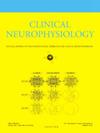Electrophysiological features of anti-neurofascin-155 autoimmune nodopathy: Preferential involvement of distal and proximal segments
IF 3.6
3区 医学
Q1 CLINICAL NEUROLOGY
引用次数: 0
Abstract
Objective
Anti-neurofascin-155 (NF155) antibody-associated autoimmune nodopathy (NF155-AN) is associated with distinct clinical features, yet its electrophysiological characteristics remain unclear. This study aimed to identify electrophysiologic features of treatment-naïve NF155-AN.
Methods
We conducted a multicenter retrospective analysis of nerve conduction data from 10 treatment-naïve patients with NF155-AN and compared them with 22 patients with seronegative chronic inflammatory demyelinating polyradiculoneuropathy (CIDP). The terminal latency index (TLI) was calculated to assess distal nerve involvement, while the intermediate segment F-ratio, a new parameter, was used to evaluate proximal nerve conduction.
Results
Patients with NF155-AN more often exhibited subacute onset, sensory ataxia, tremors, and cranial nerve involvement, and were classified as atypical CIDP with poor responses to intravenous immunoglobulin and corticosteroids. Electrophysiologically, NF155-AN patients had significantly longer distal latencies in the peroneal and tibial nerves. The TLI of the ulnar, peroneal, and tibial nerves was lower, while the intermediate segment F-ratio of the ulnar and tibial nerves was higher in the NF155-AN group.
Conclusions
NF155-AN patients exhibit prominent proximal and distal nerve slowing, suggesting unique patterns of nerve dysfunction distinct from seronegative CIDP.
Significance
These findings provide enhanced insight into the unique electrophysiological features of NF155-AN, offering clues to its pathophysiology and aiding in differentiation from CIDP.
抗神经束蛋白-155自身免疫性结节病的电生理特征:远端和近端优先受累
目的抗神经束蛋白-155 (NF155)抗体相关自身免疫性结节病(NF155- an)具有明显的临床特征,但其电生理特征尚不清楚。本研究旨在确定treatment-naïve NF155-AN的电生理特征。方法对10例treatment-naïve NF155-AN患者的神经传导数据进行多中心回顾性分析,并与22例血清阴性慢性炎症性脱髓鞘性多根神经病变(CIDP)患者进行比较。计算末梢潜伏期指数(TLI)来评估远端神经受累程度,而中间节段f比作为一个新的参数来评估近端神经传导。结果NF155-AN患者更多表现为亚急性发作、感觉共济失调、震颤和颅神经受累,并被归类为非典型CIDP,静脉注射免疫球蛋白和皮质类固醇反应差。电生理上,NF155-AN患者腓神经和胫神经远端潜伏期明显延长。NF155-AN组尺神经、腓神经和胫神经的TLI较低,尺神经和胫神经的中间段f比较高。结论snf155 - an患者表现出明显的神经近端和远端减慢,提示与血清阴性CIDP不同的独特神经功能障碍模式。这些发现增强了对NF155-AN独特电生理特征的认识,为其病理生理提供了线索,并有助于与CIDP的区分。
本文章由计算机程序翻译,如有差异,请以英文原文为准。
求助全文
约1分钟内获得全文
求助全文
来源期刊

Clinical Neurophysiology
医学-临床神经学
CiteScore
8.70
自引率
6.40%
发文量
932
审稿时长
59 days
期刊介绍:
As of January 1999, The journal Electroencephalography and Clinical Neurophysiology, and its two sections Electromyography and Motor Control and Evoked Potentials have amalgamated to become this journal - Clinical Neurophysiology.
Clinical Neurophysiology is the official journal of the International Federation of Clinical Neurophysiology, the Brazilian Society of Clinical Neurophysiology, the Czech Society of Clinical Neurophysiology, the Italian Clinical Neurophysiology Society and the International Society of Intraoperative Neurophysiology.The journal is dedicated to fostering research and disseminating information on all aspects of both normal and abnormal functioning of the nervous system. The key aim of the publication is to disseminate scholarly reports on the pathophysiology underlying diseases of the central and peripheral nervous system of human patients. Clinical trials that use neurophysiological measures to document change are encouraged, as are manuscripts reporting data on integrated neuroimaging of central nervous function including, but not limited to, functional MRI, MEG, EEG, PET and other neuroimaging modalities.
 求助内容:
求助内容: 应助结果提醒方式:
应助结果提醒方式:


